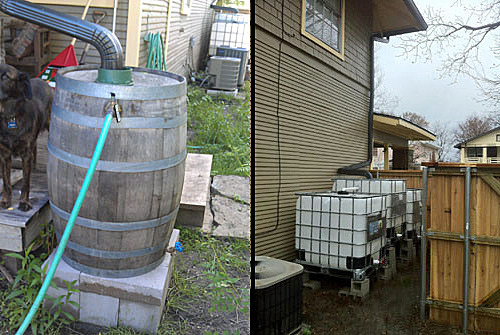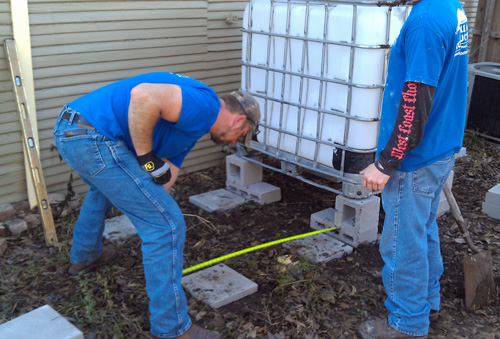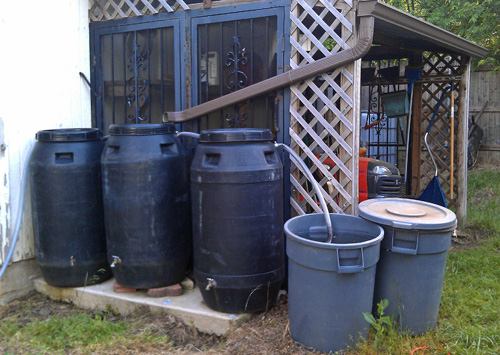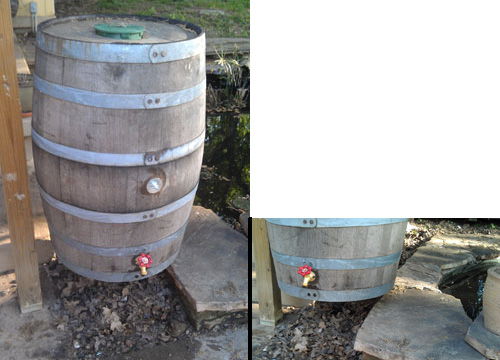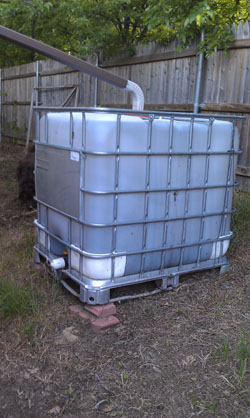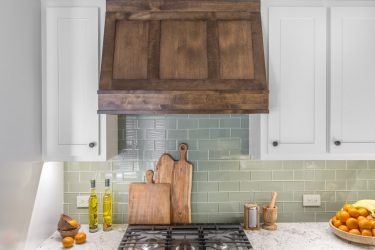A rainwater collection system is a useful and exciting addition to a garden or patio. Water conservation, especially in light of last year’s drought, should be at the top of the list when considering improvements to the outside of your home. It’s also a fun project, as each one has to be designed to fit the available space, circumstances, and requirements of the homeowner. I like to design systems that rely on gravity for flow, as using a pump seems to defeat the purpose of rain water collection, which is inherently “green” and eco-friendly.
There are several important things to consider when designing a rainwater collection system:
Foundation: 50 gallons of water weighs over 400 pounds. The container needs to sit on a solid surface that isn’t subject to erosion. If a spigot is used to release the water, the foundation should be raised enough to get a bucket under it.
Container: A wide variety of containers are available for use in a collection system. Commercially produced ones can be purchased, but for me, the best are ones that are modified to fit the design. Wine barrels and food-grade drums are two options. Because of the weight and volume of water, safety is the biggest consideration. The container will need to be sealed to prevent insects from breeding and to keep children and animals from drowning, and it is vitally important to make sure the container is stable and secure to prevent tipping. DO NOT allow children climb on or play around the containers.
Watershed: It’s possible to collect rainwater from most roofs. Some older asphalt roofs can shed toxins, so this water should not be used in vegetable gardens. The water should be filtered with leaf guards on the gutters, and a screen filter should be fit into the container to collect other debris. The gutter system should be cleaned at least twice a year—we recommend cleaning after pollen season and again after long dry spells. Never, ever use the water from your collection system for human or pet consumption.
It’s easy to calculate how quickly your rainwater container will fill. Every 100 square feet of surface area you are collecting from sheds 62 gallons per inch of rain. For you number crunchers, there are 231 cubic inches of water in a gallon, so (100sf x 144ci)/231ci = 62.33 gallons.
Extracting the water from the container: Hoses don’t work well because of lack of pressure, but for a patio, a drip system can sometimes be effective. Typically, it’s best to release the water into a five gallon bucket, and then use a smaller bucket or watering can to dip the water out for your plants.
Here are a few we’ve installed:
These are commercially sold collection barrels. I believe they were pickle barrels at one time, modified for rain barrels. They have screened tops for bug control, an overflow pipe at the top and a spigot at the bottom. The overflow pipes are nice because the water can be collected in additional barrels and cans. Water captured in the additional trash cans should be sealed after they are full.
This is a wine barrel from California that we modified into a rain water collection barrel. We made a stand that allows water to flow by it naturally, and it gives the barrel a floating effect.
This 250 gallon container was used for industrial applications, like hauling fuels, paint, and liquid food. Once they are cleaned, they make great and affordable rainwater collectors for heavier use situations.
Let me know if you are interested in designing and figuring the cost for a rainwater collection system!

